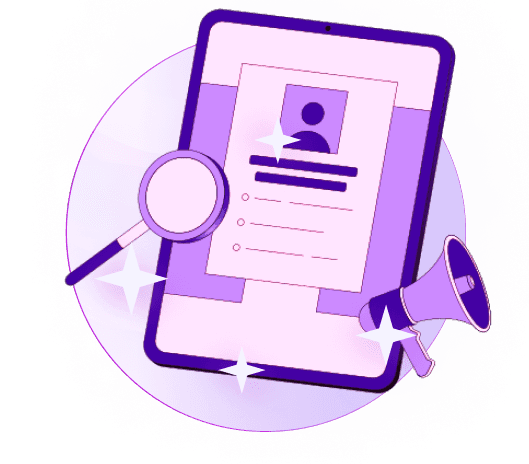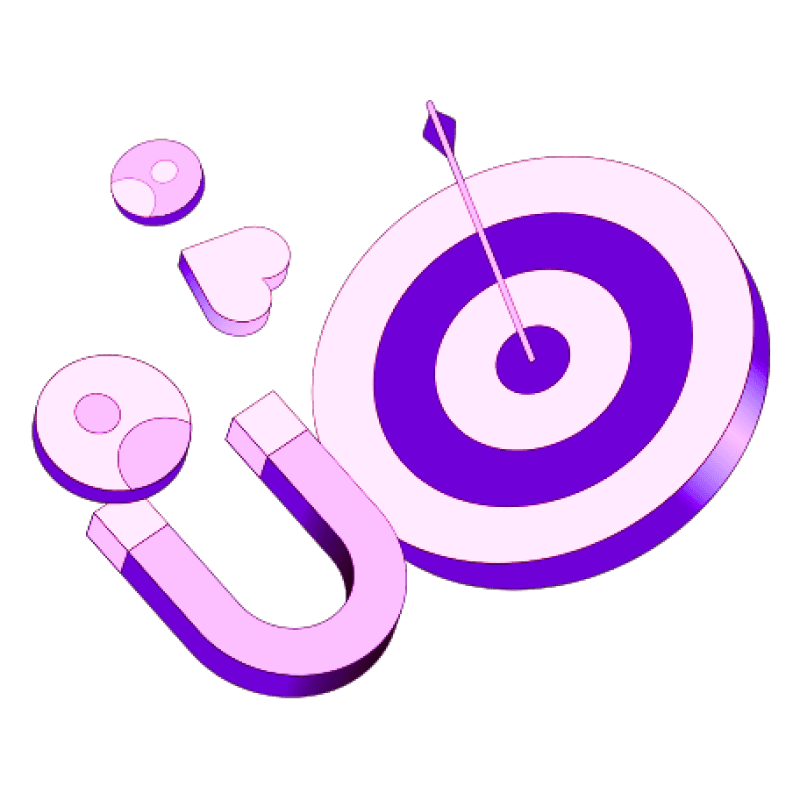Blogs
Articles

How to Build a Contact-Based Marketing Strategy That Actually Works
The response rates to contact based marketing strategy campaigns have hit an impressive 100%, and ROI figures have skyrocketed to tens or maybe even hundreds of thousands of percent.
Contact-based marketing stands out here. The strategy focuses on building quality b2b contact lists that create direct connections with decision-makers. Individual-specific emails deliver 6x higher transaction rates, and customers need eight touchpoints before making a purchase. These numbers paint a clear picture of its value.
This piece will guide you through building and implementing a contact-based marketing strategy that delivers measurable results for your business.
Understand the Shift from ABM to CBM
Traditional account-based marketing (ABM) faces a basic challenge. B2B marketers have invested heavily in ABM platforms, yet they can't see who matters most. They target entire companies instead of the actual people making buying decisions.
Why traditional account-based marketing is no longer enough
The "ghost problem" makes ABM difficult because thousands of anonymous visitors browse your site. Traditional tools can't identify these visitors. Your website only shows part of the picture. Most B2B buying research happens elsewhere, creating a blind spot that ABM can't track. Sales teams get frustrated with traditional ABM platforms. They might know a company shows interest but can't tell which person to contact.
ABM platforms don't work well because they cost too much and provide little practical value. These solutions often cost hundreds of thousands of dollars but fail to deliver enough useful data. Marketing teams must now prove their worth. They just need to show clear returns and smart spending.
How contact-based marketing improves targeting and ROI
Contact-based marketing (CBM) finds and reaches out to people based on their real buying interest, not just their company name. You can create precise campaigns that match individual buyer behavior. This helps you spend money only on contacts actively looking to buy.
The numbers tell the story clearly. Why would you spend your marketing budget on 500 employees when only three are actually interested in your solution? CBM campaigns reach more people. They achieve 1-4% CTR compared to the average 0.05-0.1% seen in traditional methods.
Key differences between ABM and CBM
The difference stands out:
Focus: ABM targets entire companies; CBM targets specific individuals
Personalization: ABM personalizes at the account level; CBM matches individual priorities and behaviors
Speed: ABM takes longer to build relationships; CBM offers quicker results
Signals: ABM uses account-level signals; CBM tracks individual contact-level signals
CBM represents the natural rise of ABM. Technology has advanced, and sales teams now understand a simple truth - you don't sell to businesses, you sell to people. Companies that arrange their sales and marketing through CBM close 67% more deals and keep 58% more customers.
Build a Strong Foundation with Contact-Level Data
Contact-level data serves as the life-blood of any marketing strategy that works today. This precise targeting method connects you directly with decision-makers who show genuine interest in your solutions, unlike broader approaches.
Identify high-intent contacts across channels
Contact-based marketing strategy's true strength lies in spotting individuals who actively research relevant topics, even away from your site. You can identify in-market buyers early in their experience and understand their research patterns. The strategy tracks signals across multiple channels—website visits, content engagement, social media activity, and event participation—to paint a complete picture of prospect interests.
LinkedIn events prove valuable because participants show their interest directly. These prospects convert 3-5x more often than cold leads.
Use behavioral and intent signals to qualify leads
Behavioral signals show which prospects will likely convert. These intent indicators include:
Visiting high-value pages (pricing, product demos, security information)
Content downloads and interaction patterns
Return visit frequency and duration
Specific conversion point interactions
Up-to-the-minute data analysis of these behaviors helps identify high-intent leads and directs your sales team's focus effectively. Each lead receives an intent score based on their actions. Different values carry weight therefore—a pricing page visit matters more than viewing a homepage.
De-anonymize website visitors with contact-level tools
Modern de-anonymization tools turn anonymous traffic into practical contact data while maintaining privacy compliance. These tools capture and enrich data from form fills, email URL clicks, product log-ins, and IP addresses automatically to reveal exactly who visits specific pages.
Tools like Clearbit Reveal, Leadfeeder, and Albacross discover visitor identities through IP address tracking and third-party data sources. They provide rich information about company size, industry, location, and decision-makers' contact details.
Want to build a strong foundation with contact-level data? Visit Persana.ai to start using tools that search more than 75 databases simultaneously to identify and involve your highest-potential prospects.
Create and Segment Your B2B Contact List
Quality contact lists serve as the foundation of a successful contact-based marketing strategy. Your ability to target decision-makers and create meaningful connections that drive conversions depends on the quality of your contacts.
Define your ideal customer profile (ICP)
Your ideal customer profile represents companies that are most likely to become high-value customers. You should analyze your most profitable existing clients to identify their common characteristics. A good ICP includes firmographics (company size, industry, revenue), technographics (technology stack), and business situation (growth rate, profitability).
Companies that invest in a well-defined ICP see faster sales cycles and higher deal values. Your ICP needs to be specific - a company with 101 employees is different from one with 699.
Build and verify your B2B contact list
After defining your ICP, gather contact information from multiple trusted sources. LinkedIn events and groups provide valuable leads since participants show clear interest in specific topics. Website forms, trade shows, and specialized data providers work well too.
Data accuracy matters the most. Tools like ZeroBounce help maintain list quality and protect your sender reputation through regular verification. Need help creating and segmenting your B2B contact list? Check out https://persana.ai/ for powerful contact-based marketing tools.
Segment contacts based on behavior and role
Behavioral segmentation groups contacts by their interaction patterns. You can segment by:
Purchasing behavior (decision-making process, research patterns)
Usage-based criteria (heavy, medium, or light users)
Benefits sought (what they hope to gain)
Customer experience stage (awareness, evaluation, purchase)
Role-based segmentation plays a crucial part. Select company filters (revenue, headcount, industry) first, then target specific titles to find true decision-makers.
Avoid common mistakes in contact list building
Your contact details need regular verification and updates to prevent wasted resources. Never buy lists without proper due diligence - make sure providers follow data protection regulations. Quality beats quantity - reaching 10 qualified leads works better than contacting 100 uninterested prospects. A consistent follow-up schedule helps maintain engagement with potential clients.
Activate and Optimize Your CBM Campaigns
Your contact data can power your strategic execution. A successful contact-based marketing strategy needs the right channels, individual-specific approaches, and constant result measurement.
Choose the right channels for outreach
A multi-channel approach will meet contacts where they respond best. Each channel has its unique strengths:
Email: Both warm and cold outreach work well with individual-specific messages
Social media: Perfect when your content needs high user participation
Phone: Personal conversations work best with interested prospects
Direct mail: Reaches specific geographical areas and hard-to-reach prospects effectively
Your industry and target audience will respond differently to various channels. The right channel at each buyer experience stage brings maximum results. Social media and display ads build awareness, while webinars and direct mail drive deeper participation.
Personalize content and offers for each segment
Contact-based marketing brings precision to your advertising by targeting specific buyers. This method helps you:
Get higher match rates than traditional B2B targeting
Boost ROAS by cutting wasteful broad targeting
Create individual-specific experiences based on known interests
Individual-specific emails boost open rates by 29% and click-through rates by 41%. Dynamic campaign content lets you show tailored messages based on recipient data and create segment-specific offers.
Line up sales and marketing to convert better
Companies with strong sales and marketing alignment grow 19% faster and see 15% more profit. These steps will help you succeed:
Set shared objectives, messaging, and KPIs between teams
Share goals openly and work toward common objectives
Review metrics and map customer experiences in regular meetings
Use centralized communications with consistent distribution timing
Track performance and refine your strategy
Your CBM campaigns need constant optimization to deliver results. These practices work best:
Track CTR, conversion rates, and ROI metrics daily
Set clear KPI benchmarks for each segment
Run regular A/B tests to check segment responses
Update targeting when segments drift 15% from goals
Take your contact-based marketing strategy higher. Visit persana to optimize your CBM campaigns today.
Conclusion
Contact-based marketing represents a powerful step forward from traditional account-based approaches. This piece shows how CBM connects you directly with decision-makers instead of targeting whole organizations. This targeted approach improves your marketing results substantially.
The numbers tell a compelling story. Companies using CBM strategies see response rates up to 100% with ROI reaching tens of thousands of percent. Traditional funnels close only 0.25% to 1.5% of leads, while contact-based approaches help businesses close about 11% of their targeted accounts.
Your contact-based marketing success depends on these key elements:
Finding high-intent contacts on multiple channels quickly
Building B2B contact lists based on ideal customer profiles
Breaking down segments by behavior and role
Creating individual-specific outreach for each segment
Getting sales and marketing teams to work together
CBM acknowledges a basic truth about B2B sales - you sell to people, not companies. Your marketing strategy must focus resources on decision-makers who show real buying intent.

Create Your Free Persana Account Today
Join 5000+ GTM leaders who are using Persana for their outbound needs.
How Persana increases your sales results
One of the most effective ways to ensure sales cycle consistency is by using AI-driven automation. A solution like Persana, and its AI SDR - Nia, helps you streamline significant parts of your sales process, including prospecting, outreach personalization, and follow-up.



